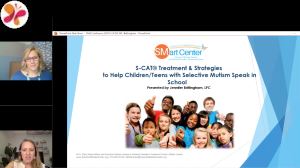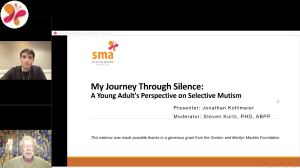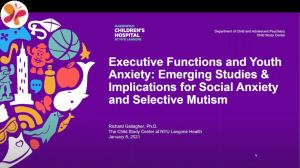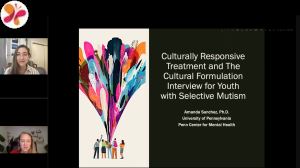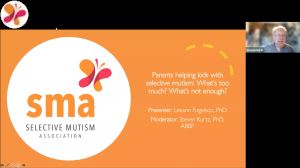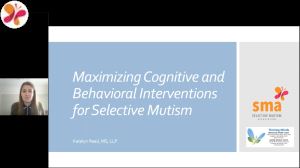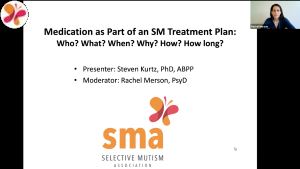Jennifer Brittingham, a licensed professional counselor at the SMart Center, discusses:
– What is S-CAT® -Social Communication Anxiety Treatment?
-S-CAT® and the treatment of Selective Mutism
-Diagnostic criteria, etiology, and presenting symptoms
-Contributing factors to SM
-Goals of S-CAT®
-S-CAT® strategies at home and within the school setting
-Using S-CAT® across educational platforms and current pandemic. Tools for transition.
Resources Categories: Professionals
Webinar: My Journey Through Silence: A Young Adult’s Perspective on Selective Mutism
Jonathan Kohlmeier was diagnosed with selective mutism at age 5. Through extensive therapy he was able to overcome his SM. At the age of 19 he wrote a book about his experiences called Learning to Play the Game: My Journey Through Silence. From not speaking to a single classmate in kindergarten to eventually being on his high school debate team, Jonathan will talk about his journey and answer questions. Moderating the discussion will be Dr. Steven Kurtz, Jonathan’s own doctor who helped him challenge his SM as a child.
Webinar: What are the Executive Functions and Are They Important in Selective Mutism and Childhood Anxiety Disorders?
The executive functions are seminal components in children’s development and adjustment. When thinking of child and adolescent disorders, most executive function investigations have focused on excessive behaviors such poor attention control, impulsivity, and aggression. However, the executive functions play a role in anxiety disorders as well.
Webinar: Culturally Responsive Treatment and The Cultural Formulation Interview in Youth with Selective Mutism and Anxiety
This webinar will discuss the importance of emphasizing cultural context in our clinical work with youth and families. Then, the cultural formulation interview (CFI) will be described. How to gather culturally relevant information to incorporate into case conceptualization and treatment planning in the context of selective mutism and anxiety will be discussed.
Parents Helping Kids with SM: What’s Too Much? What’s Not Enough?
For loving caregivers, it is challenging to see your child in distress. It can be difficult to grapple with the fact that ‘rescuing’ a child from moments of distress can actually do more harm than good. When we make it too easy for an anxious child with selective mutism not to talk, we inadvertently reinforce their habit of avoidance.
Maximizing Cognitive and Behavioral Interventions for Selective Mutism
In this webinar, Katelyn Reed, MS, LLP will discuss how to maximize cognitive and behavioral interventions for use with clients with Selective Mutism. A particular emphasis will be placed on the use of exposure therapy and the specific skills that are used to facilitate speech. This program is intended for both parents and professionals.
Medications as Part of a Selective Mutism Treatment Plan: Who? What? When? Why? How? How long?
The decision to try adding medicine to a treatment plan for your child with Selective Mutism is often a very agonizing one. No parent ever wakes up and says, “Gee, I’d love to give my young child a psychotropic medication today.” Rather you wrestle with the decision. Do we need it? Will there be side effects? Will it hurt my child in the long run? Will it change their personality? How long will they need to be on it?
